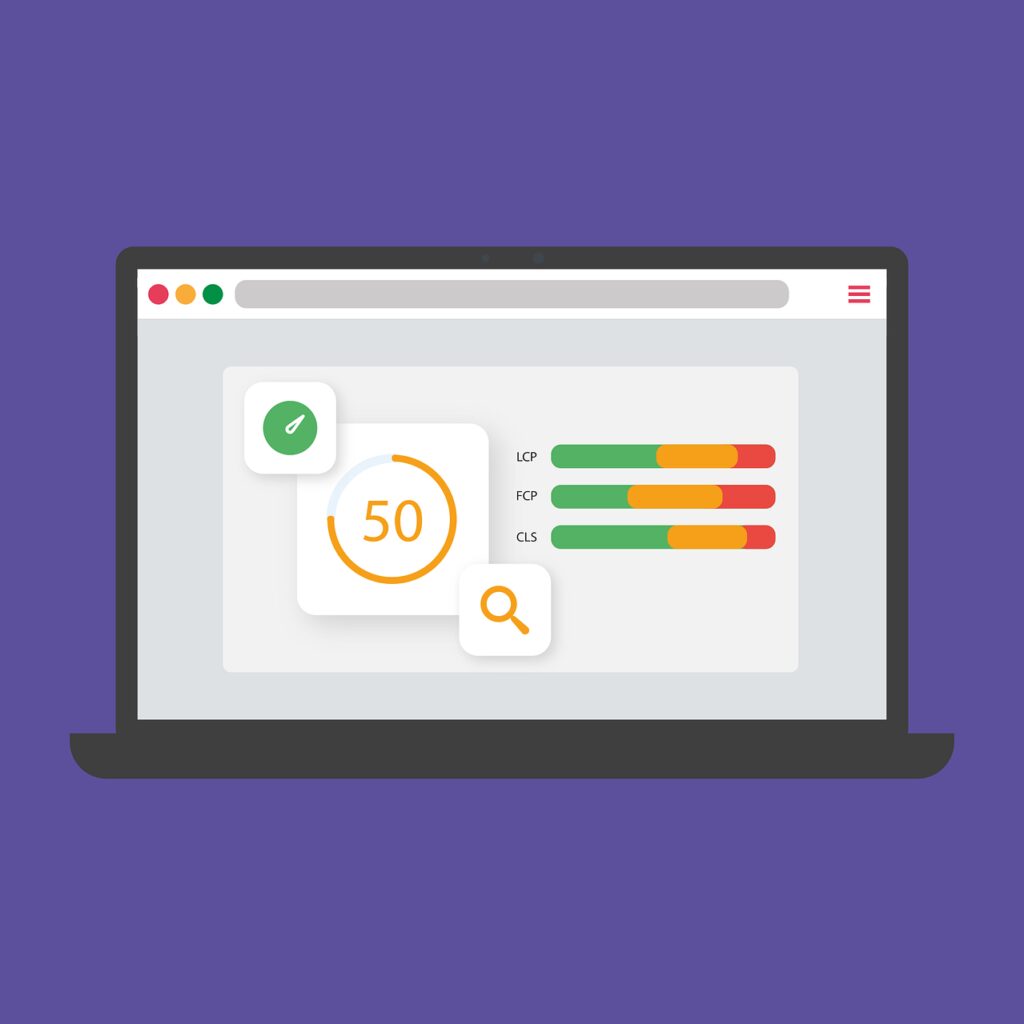Visit Core Web Vitals are key indicators defined by Google to assess the quality of the user experience on a website. They focus on three main aspects:
- Largest Contentful Paint (LCP) LCP: measures the loading time of the page's main content. A PCL of less than 2.5 seconds is recommended.
- Interaction to Next Paint (INP) INP: replacing First Input Delay (FID) since March 2024, INP evaluates the overall responsiveness of a page by measuring the delay between a user interaction and the corresponding visual response. An INP of less than 200 milliseconds is considered good.
- Cumulative Layout Shift (CLS) CLS: evaluates visual stability by quantifying unexpected displacements of page elements. A CLS of less than 0.1 is ideal.
Optimizing these metrics is essential for improving your site's user experience and natural search engine optimization (SEO). Here are some strategies for doing so:
Improving Largest Contentful Paint (LCP)
- Image optimization Compress and resize images to reduce weight without compromising quality. Using modern formats such as WebP can also help.
- Efficient caching configure server- and browser-side caching to speed up page loading times.
- Using a content delivery network (CDN) A CDN distributes your site's content to multiple servers around the world, reducing latency for users far from the main server.
Optimizing Interaction to Next Paint (INP)
- Minimizing JavaScript reduce the size and complexity of JavaScript files to cut processing time.
- Delay loading of non-essential scripts Load scripts that are not crucial to the initial rendering of the page after the main content has been loaded.
- Avoid time-consuming tasks Identify and optimize JavaScript tasks that block the main thread for more than 50 milliseconds.
Reduce Cumulative Layout Shift (CLS)
- Defining media dimensions Specify the dimensions of images, videos and other multimedia elements to avoid layout changes when they are loaded.
- Avoid dynamic insertion of content on top of existing content To maintain visual stability, insert new elements below or next to content already loaded.
- Use stable fonts For example, use system fonts or ensure that web fonts are loaded in such a way as not to cause flashes of unstyled text.
Tools for measuring and monitoring Core Web Vitals
- Google PageSpeed Insights The Core Web Vitals: provides a detailed analysis of your site's performance, including Core Web Vitals.
- Google Search Console Core Web Vitals: provides a specific report on Core Web Vitals, identifying pages in need of improvement.
- Lighthouse integrated into Chrome's development tools, it lets you audit your site's performance and accessibility.
By integrating these practices, you'll not only improve the user experience, but also your site's ranking in search results.











